|
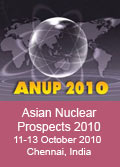
|
 |
|
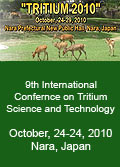 |
 |
|
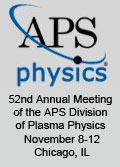
|
 |
|
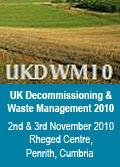
|
 |
|
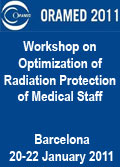
|
 |
|
|
|
|
Si no desea recibir mas este Boletín haga click aqui. |
|
|
|
|
|
|
|
|
|
|
|
|
|
|
|
 |

 |
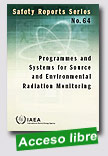 |
Programmes and Systems for Source and Environmental Radiation Monitoring
IAEA Safety Reports Series, 2010, 234 p.
The objective of this Safety Report is to complement IAEA Safety Guide RS-G-1.8 and to provide the methodological and technical details of the design and operation of monitoring programmes for different radionuclides, environmental media and types of facility. It also covers general issues of emergency monitoring during and in the aftermath of an accidental release of radionuclides and gives an outline of dose assessment |
procedures based on monitoring data and the reporting of information to the regulatory body.
Extraído de:
http://www-pub.iaea.org/MTCD/publications/PubDetails.asp?pubId=8242
|
 |
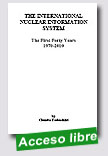 |
The International Nuclear Information System - The First Forty Years 1970-2010
IAEA, 2010, 175 p.
INIS represents an extensive pool of information in the nuclear field. The first INIS output products, the printed Atomindex and associated magnetic tapes, were issued in April 1970. INIS has since grown into one of the most successful and comprehensive information systems on the peaceful uses of nuclear science and technology. From its birth INIS became a trailblazer for the world of nuclear information. The history of international information cooperation in an extremely sensitive discipline, is told in a report entitled INIS 40th Anniversary.
|
Extraído de:
http://www.iaea.org/inis
|
 |
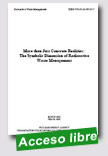 |
More than Just Concrete Realities: The Symbolic Dimension of Radioactive Waste Management
Nuclear Energy Agency (NEA), 15 April 2010, 36 p.
Key concepts of radioactive waste management, such as safety, risk, reversibility and retrievability, carry different meanings for the technical community and for non-technical stakeholders. Similarly, socio-economic concepts, including community, landscape and benefit packages, are interpreted differently by diverse societal groups. Opinions and attitudes are not simply a faithful reflection of decision making, actual events and communicated messages; perceptions and interpretations of
|
events and objects also play a role. This report presents key issues and examples in order to build awareness of the importance of symbols and symbolism in communicating about perceptions and interpretations. It adds to the recognition that dialogue amongst stakeholders is shaped by dimensions of meaning that reach beyond dictionary definitions and are grounded in tradition and social conventions. A better understanding of these less obvious or conspicuous realities should help find additional ways of creating constructive relationships amongst stakeholders.
This publication is also available in French as: Au-delà des seules réalités concrètes : la dimension symbolique de la gestion des déchets radioactifs - http://www.nea.fr/pub/ret.cgi?id=6870
Extraído de:
http://www.nea.fr/pub/ret.cgi?id=new#6869
|
 |
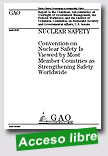 |
|
and (2) prepare a national report every 3 years that describes the measures the country has taken to achieve the Convention’s nuclear safety goals, are among its most useful contributions. The countries present their national reports at review meetings, address questions that may arise about the reports, and assess and ask questions about the reports of other parties. This is known as the peer review process. Some concerns were raised about limited public access to Convention proceedings, some countries’ lack of resources to fully participate in the review meetings, and the absence of performance metrics in the national reports to gauge progress toward meeting safety goals and objectives. Half of the parties responding to GAO’s survey stated that the lack of performance metrics limited the usefulness of the Convention. Neither the Department of State nor the Nuclear Regulatory Commission (NRC) has formally proposed the adoption of performance metrics. However, NRC officials told GAO that performance metrics could be useful. In addition, the number of parties posting their national reports to IAEA’s public Web site has declined since 2005. NRC and Department of State officials told GAO that the United States has always made its national report available on the Internet. However, the U.S. approach has been to lead by example rather than taking an active role in encouraging other parties to post their reports. Further, universal participation would advance achievement of the Convention’s goals. Several representatives from countries who are parties to the Convention told GAO that Iran should ratify the Convention. In their view, without Iran’s participation, the international community has limited or no insight on, or access to, Iran’s civilian nuclear power program. Russia, which is helping Iran build the nuclear reactor at Bushehr, may condition continued assistance on Iran becoming a party to the Convention, according to Russian officials.
The parties have taken some actions to improve the Convention’s implementation, and more proposals are being considered. Steps have been taken to make the process for asking questions during peer review meetings more open and to increase the amount of time available for preparing for the review meetings.
IAEA nuclear safety programs, which predate the Convention, complement the Convention’s safety goals through the Technical Cooperation program, safety standards, and peer review missions. The Technical Cooperation program supports, among other things, the development of nuclear power. IAEA has established nuclear safety standards and also promotes nuclear safety through peer review missions that evaluate the operations of a member state’s nuclear regulatory system and nuclear power plant operational safety.
Extraído de:
http://www.gao.gov/highlights/d10489high.pd
|
 |
 |
Nuclear Power Reactors in the World - 2010 Edition
IAEA Reference Data Series, 2010, 80 p.
This is the thirtieth edition of Reference Data Series No. 2, Nuclear Power Reactors in the World, which is published once per year, to present the most recent reactor data available to the Agency. It contains the following summarized information:
— General and technical information as of the end of 2009 on power reactors operating or under construction, and shut down;
— Performance data on reactors operating in the Agency's Member States, as reported to the IAEA.
|
The Agency's Power Reactor Information System (PRIS) is a comprehensive data source on nuclear power reactors in the World. It includes specification and performance history data of operating reactors as well as reactors under construction or reactors being decommissioned. PRIS data are collected by the Agency through the designated national correspondents of
Member States.
Extraído de:
http://www-pub.iaea.org/MTCD/publications/PDF/iaea-rds-2-30_web.pdf
|
 |
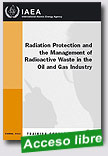 |
Radiation Protection and the Management of Radioactive Waste in the Oil and Gas Industry
IAEA Training Course Series, 2010, 218 p.
The oil and gas industry, a global industry operating in many Member States, makes extensive use of radiation generators and sealed and unsealed radioactive sources, some of which are potentially dangerous to human health and the environment if not properly controlled. In addition, significant quantities of naturally occurring radioactive material (NORM) originating from the reservoir rock are encountered during production, maintenance and decommissioning. The oil and gas industry operates in all climates and environments, including the most
|
arduous conditions, and is continuously challenged to achieve high efficiency of operation while maintaining a high standard of safety and control — this includes the need to maintain control over occupational exposures to radiation, as well as to protect the public and the environment through proper management of wastes that may be
radiologically and chemically hazardous. The oil and gas industry is organizationally and technically complex, and relies heavily on specialized service and supply companies to provide the necessary equipment and expertise, including expertise in radiation safety.
This training manual is used by the IAEA as the basis for delivering its training course on radiation protection and the management of radioactive waste in the oil and gas industry. Enclosed with this manual is a CD-ROM that contains the presentational material used in the training course, the course syllabus and additional notes for course presenters. The course material is based principally on IAEA Safety Reports Series No. 34 Radiation Protection and the Management of Radioactive Waste in the Oil and Gas Industry, published by the IAEA in 2003. The training course is aimed at regulatory bodies; oil and gas field operators and support companies; workers and their representatives; health, safety and environmental professionals; and health and safety training officers.
Extraído de:
http://www-pub.iaea.org/MTCD/publications/PDF/TCS-40_web.pdf
|
 |
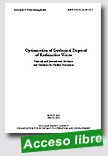
|
Optimisation of Geological Disposal of Radioactive Waste - National and International Guidance and Questions for Further Discussion
Nuclear Energy Agency (NEA), 11 March 2010, 28 p.
As national geological disposal programmes progress towards implementation, the concept of “optimisation” and related requirements are receiving increased attention. Exchanges within NEA expert groups have shown that both regulators and implementers would benefit from a review of the relevant concepts and available guidance and experience. This report summarises and reviews the concepts relevant to the
|
“optimisation” of geological disposal systems as they are outlined in national and international guidance. It also presents a set of observations and key questions. Overall, the report shows that, when addressing “optimisation”, there is ample scope for clarifying concepts, facts and possibilities and for ensuring that regulatory guidance is sufficiently precise and implementable. The intention is that this report should serve as a basis for discussion within and beyond NEA committees and expert groups.
This publication is also available in French as: Optimisation des stockages géologiques de déchets radioactifs - Recommandations nationales et internationales et futurs thèmes de discussions - http://www.nea.fr/pub/ret.cgi?id=6837
Extraído de:
http://www.nea.fr/pub/ret.cgi?id=new#6836
|
 |
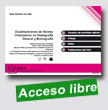 |
Establecimiento de Niveles Orientativos en Radiografía General y Mamografía
IAEA TECDOC CD Series, Abril 2010, 89 p.
De todas las causas de la exposición del ser humano a las radiaciones ionizantes de origen artificial, la mayor contribución corresponde a las aplicaciones en medicina. Existe por tanto en esta área un gran potencial para reducir las dosis a los pacientes y consecuentemente a toda la población, como es
|
recomendado en las publicaciones del Organismo Internacional de Energía Atómica (OIEA) y la Comisión Internacional de Protección Radiológica (CIPR).
Los tres principios básicos del Sistema de Protección Radiológica recomendados por la ICRP son la justificación de la práctica y la optimización de la protección y la aplicación de límites individuales de dosis a los trabajadores y a los miembros del público [2]. En el caso de la exposición de los pacientes, no son aplicables los límites de dosis, ya que estos podrían ir en detrimento del propio paciente. Pero en cambio se definieron los llamados niveles orientativos con la finalidad de que sirvan de guía para que se apliquen todas las medidas que aseguren que las exposiciones de los pacientes sean las mínimas necesarias para lograr el objetivo diagnóstico
Extraído de:
http://www-pub.iaea.org/MTCD/publications/PDF/TE_1646_CD/Start.pdf
|
 |
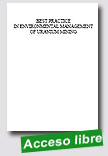 |
Best Practice in Environmental Management of Uranium Mining
IAEA Nuclear Energy Series, 2010, 34 p.
This publication has been written to assist Member States in the development of their uranium mineral resources. It sets out the basic tenets of best practice in terms of environmental management of uranium mining and processing operations from the viewpoint of both operators and regulators, and is accompanied by a collection of case studies from leading representatives in the global mining industry.
|
|
 |
|
|
|
|
|
|
|
|
| |
|
|
|
|
|
